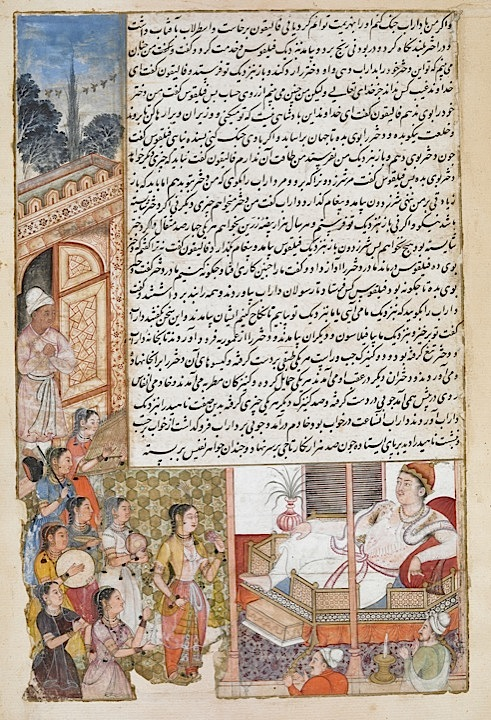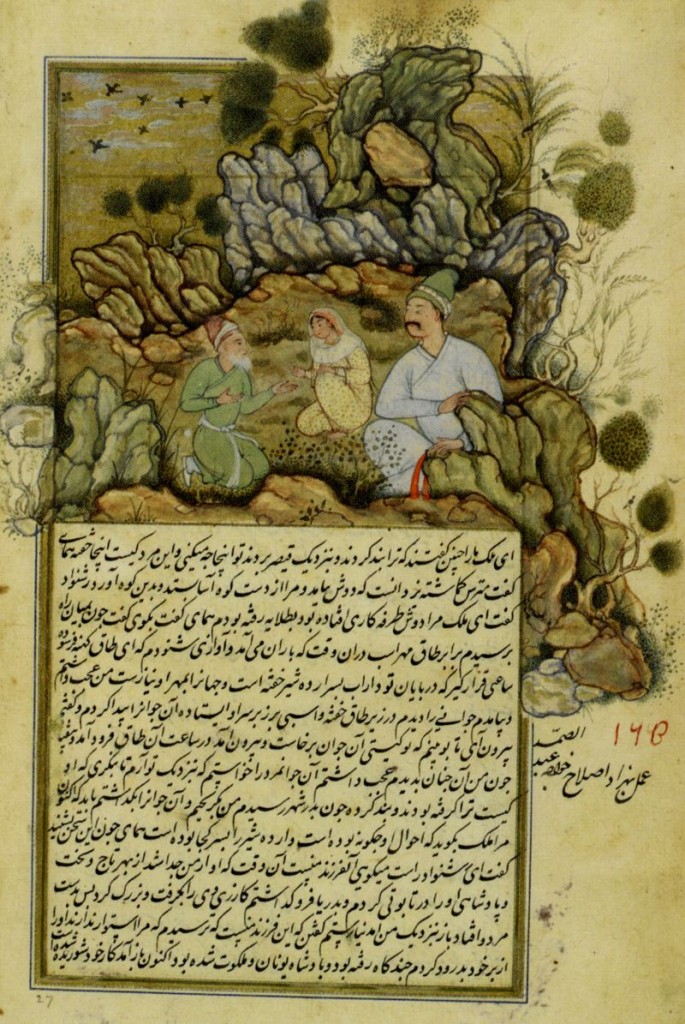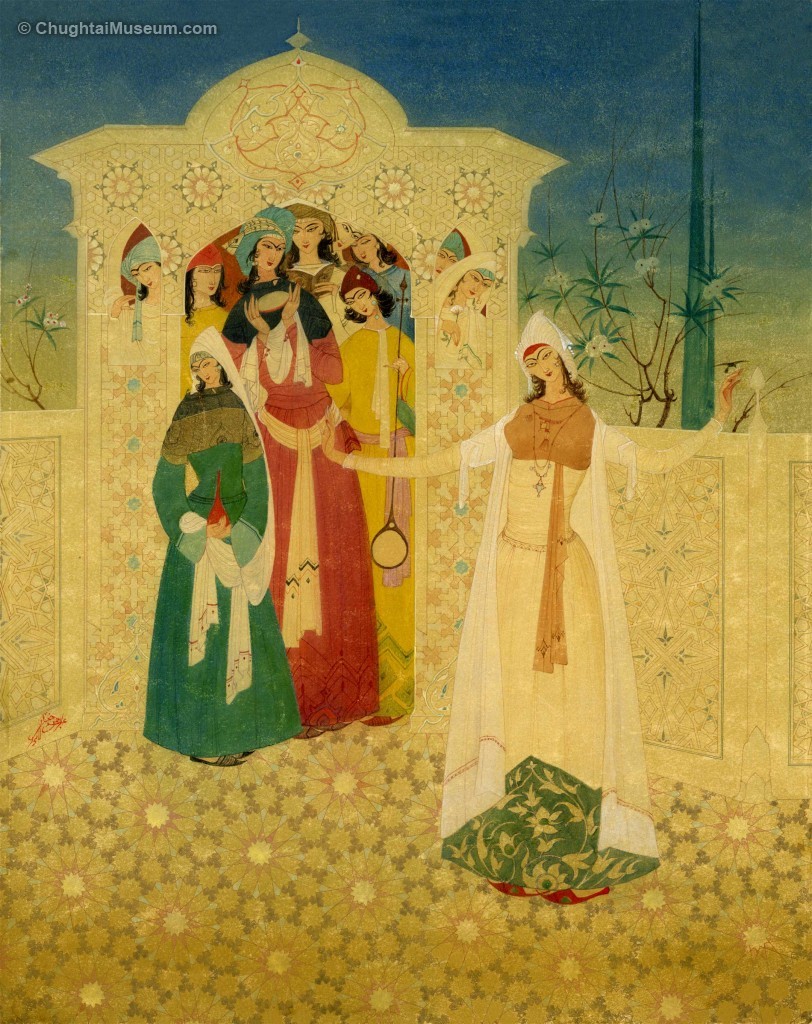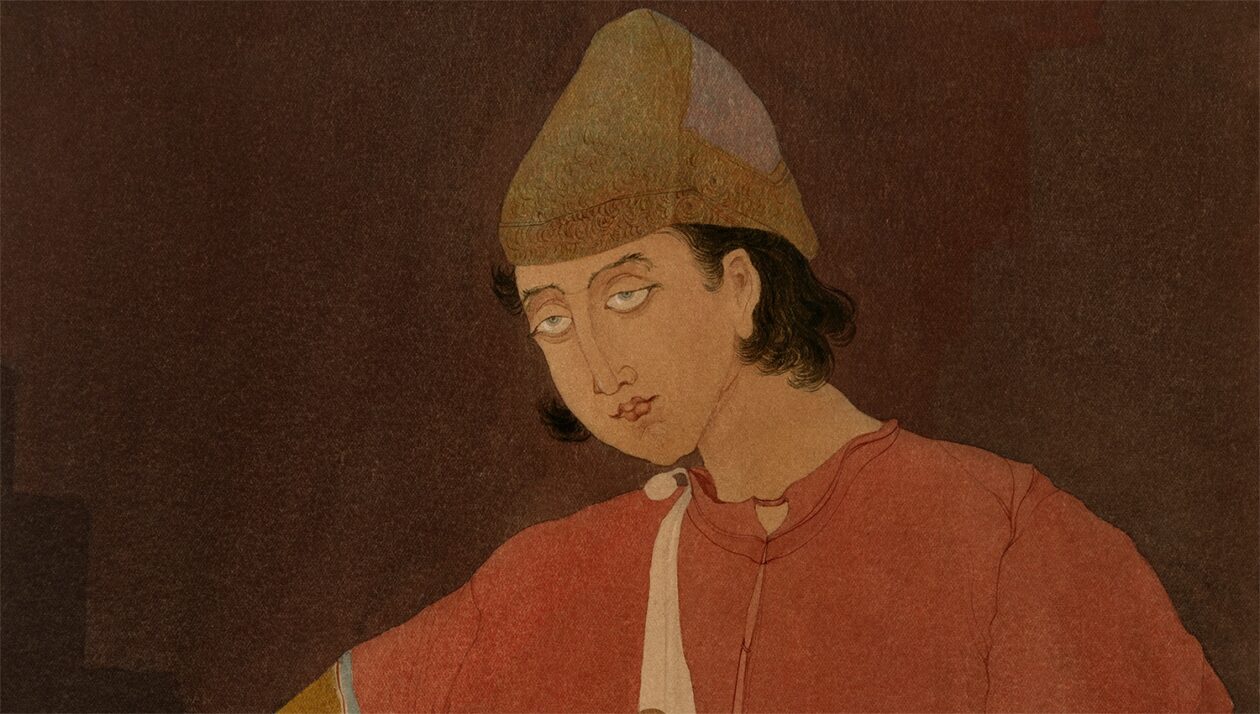MORE ON USTAD BEHZAD LAHORI
DARAB NAMAH MANUSCRIPT
Tracing Lahori links

The Darab namah in the archives of a leading museum in England contains the remnants of 200 paintings. Although considered on a smaller scale than a Royal work, it is actually an attempt by STUDENTS OF THE MUSSSAVARI KHANA AT LAHORE. This is illustrated b a notation on the manuscript of a painting by Behzad Lahori, that it was corrected by Ustad Khawaja Abdul Samad (his father) of Lahore. The authorities speak of the many details of the manuscript and they say:
“The tales of Darab: a medieval Persian prose romance
One of the manuscripts we have recently digitised is the Dārābnāmah, an illustrated prose romance describing the adventures of the Persian King Darab, son of Bahman, and Alexander the Great, originally composed in the 12th century by Muhammad ibn Hasan Abu Tahir Tarsusi. Our copy unfortunately only contains the first part of the epic, ending with the story of the Macedonian princess Nahid, Darab’s newly-wedded bride and the future mother of Alexander the Great, being returned unwanted (she had bad breath) but pregnant to her father Faylaqus (Philip of Macedon).

Our copy was probably completed between 1580 and 1585 for the Mughal Emperor Akbar. Classed as ‘Grade Two’ in the Mughal imperial library, it originally contained at least 200 paintings, and presumably there was also a second volume. By 1828, probably looted or sold, it belonged to the Nawabs of Awadh whose seals are stamped on the final leaf. When the British Museum purchased it from Quaritch in 1893, there were only 157 paintings and many leaves, including the colophon, were missing.”
Now we know that Emperor Akbar was in Lahore in the year attributed to the manuscript and the Mussavari Khana was in full swing. Students were being trained and the many artists working on a lower standard copy does not mean anything else but that it was an attempt by the newly recruited students at Lahore to show their learning process acquired under the great Master Khawajah Abdul Samad. What can be more clear than that? The assertion is more clear when we find at least two painters of the manuscript calling themselves Lahori itself. In simple terms the Manuscript was done in Lahore by all the students who were working in Lahore under the great Master. Most of them, these students, would be working in the Lahore Fort but living in the inner city itself, the birth place of Mughal painting.
We personally note something very strange. The composition of the work (illustrated) has a background composition which is very much like the background handling in the Art of M.A. Rahman Chughtai. There is Chughtai in the work in muted form. How did that happen? It was the signal of Lahore to develop its own traits compositions and momentos in art. That the son of Lahore, M.A Rahman Chughtai inherited traits of Ustad Behzad of Lahore is self evident in our history.


I love Behzad Lahori. More and more on Lahoris, all those who hate and envy Lahore.